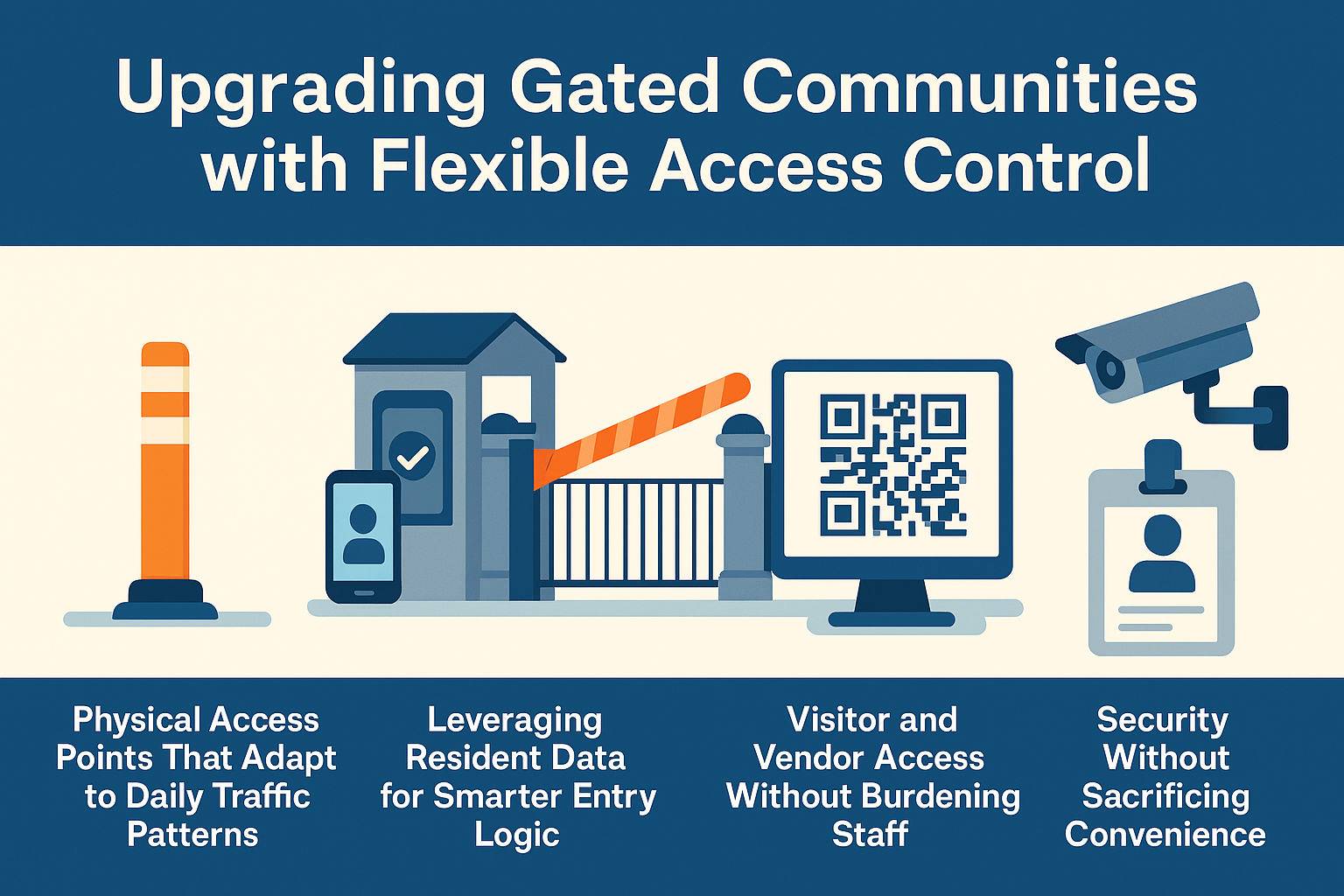Upgrading Gated Communities with Flexible Access Control

Gated communities are a common feature in cities, offering a sense of privacy and controlled access. As these neighborhoods grow, the mix of lifestyles and daily routines becomes more diverse—families, remote workers, frequent travelers—all with different expectations around convenience and security. This shift has increased the need for smarter, more adaptable access systems that don't interrupt daily life.
Many communities are now rethinking how access control works—not just to keep people out, but to help the right people move freely. The goal is to introduce flexible systems that support smoother traffic flow, reduce wait times, and give residents more control over who enters and when. These updates can make daily routines easier while still protecting the space residents call home.
Physical Access Points That Adapt to Daily Traffic Patterns
Flexible access points help gated communities handle the busy and quiet times more easily. These posts, such as a collapsible bollard, can be dropped or removed to create more lanes when traffic builds up—like during events or move-in days. They make it easier for people to come and go without slowing things down or lowering security, so residents don't have to waste time waiting at the gate.
Automated gates with scheduling features are another practical option. These systems adjust access based on time of day or traffic forecasts, helping to keep things running smoothly. They're especially helpful for handling pedestrian zones during slower times. Putting these systems in place creates a better flow for everyone coming and going. Strategically placing collapsible bollards near high-traffic entry points can ease congestion during busy periods without reducing safety.
Leveraging Resident Data for Smarter Entry Logic
Looking at how residents use entry points throughout the day can reveal useful patterns. Communities can use this information to fine-tune access systems. For instance, time-based permissions allow only registered residents to enter during certain hours. This approach helps manage traffic better, especially during peak times, and makes getting in and out easier for everyone.
Geofencing makes things easier. When a resident nears the gate, it opens automatically—no need to stop or swipe a card. It's a smart, time-saving feature. Emergency vehicles can also get in faster, which really matters in urgent situations. This tech helps residents and responders get where they need to go quickly.
Visitor and Vendor Access Without Burdening Staff
Self-service visitor management systems simplify the process of handling guests and vendors without overwhelming on-site staff. Residents can generate digital passes—either as unique access codes or QR codes—for their visitors. These passes let guests enter quickly, avoiding long waits at guard booths or drawn-out sign-in procedures.
For recurring visitors, license plate recognition offers an efficient option: the system reads the plate and opens the gate automatically, with no staff involvement. Vendor access can be managed through a centralized system that checks credentials and only allows approved service providers through. These tools strengthen security while streamlining daily operations.
Security Without Sacrificing Convenience
Modern access control systems don't have to be a tradeoff between convenience and safety—they can deliver both. Dual-authentication is a good example. Communities can require two forms of identification for shared amenities like pools or fitness centers. This protects common areas while keeping things simple for residents.
Real-time monitoring adds extra safety. Cameras and sensors track who comes and goes and alert staff if something seems off. Tamper detection spots break-in attempts before they become a problem. These features help residents feel at ease while keeping the system responsive and secure.
System Maintenance That Keeps Failures From Going Unnoticed
Regular maintenance is key to keeping access control systems working reliably. Communities should schedule routine diagnostics to catch hardware problems before they become serious. Following a regular check-up schedule helps management keep track of how the system is working and fix problems early.
Cloud-based monitoring makes maintenance easier. These systems give real-time updates on how hardware is doing, helping spot problems before they get worse. Local service teams can jump in fast when needed. This hands-on approach helps avoid bigger issues and keeps everything running well.
Gated communities work best when access systems are both safe and easy to use. Flexible setups like collapsible bollards and timed gates help traffic move faster during busy hours. Smart tools—like geofencing and time-based entry—make things easier for residents without adding extra steps. Digital guest passes and license plate scanners help visitors get in without bothering staff. Shared spaces stay secure with simple tools like two-step ID checks and live camera alerts. Regular checkups and cloud monitoring catch problems early, so nothing breaks without warning. Using these tools, communities can stay secure while making daily life more convenient for everyone.
Published 4/7/25